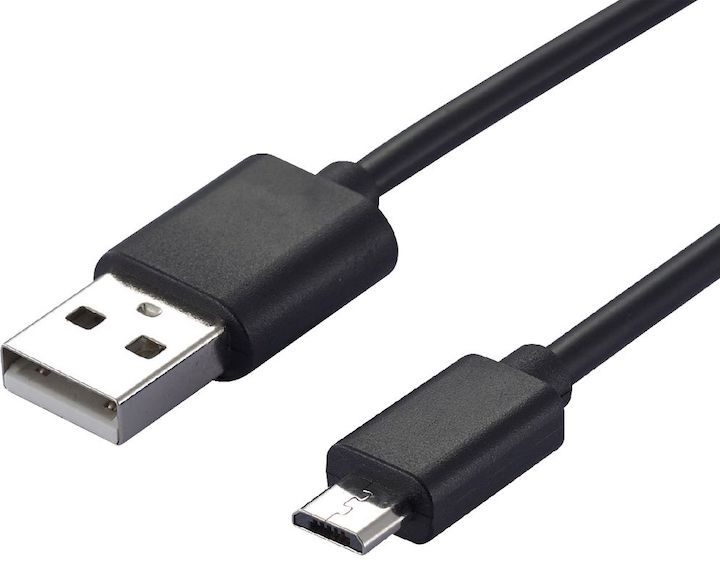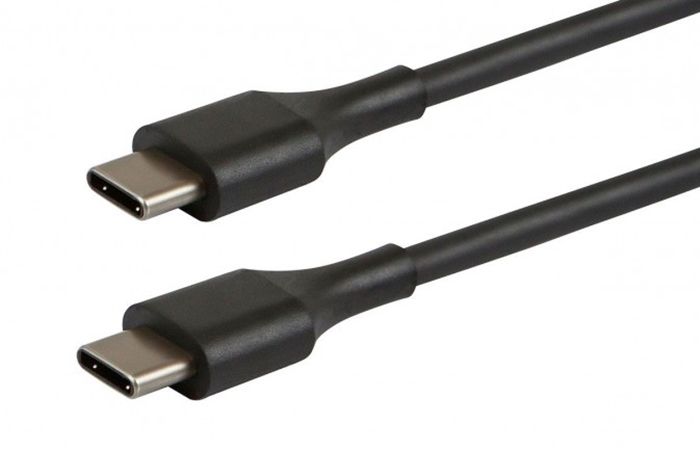Remember the times when we would charge our mobile phones with a 2.5mm plug? Times have changed a lot since then, and electronic devices have gone from that circular port to a USB port instead, making battery charging and file transfer more efficient than what it was once. Let’s take a quick look through the evolution of the USB ports in smartphones.

Before anything else, all of the USB ports mentioned here have the USB Type-A as its socket connector. The Type-A connector is intended to be used on the host controller and hubs of the following upstream connectors. Now that we have that out of the way, read on for a short history lesson!

The Mini-USB was first introduced in the year 2000 and was used to connect not only mobile devices but a whole other of electronics, namely MP3 players, cameras, and PDAs. USB-Mini connectors were equipped with 5 pins and were rather small compared to the size of a USB A. One of Motorola’s flip phones, the Moto Razr V3, had a mini-USB port.

Motorola Moto Razr V3

First announced in 2007, the micro-USB became the standard port for almost all the newer smartphone devices. Other electronics followed suit as well, as the micro-USB’s connecting port is much smaller in size compared to that of a USB-mini. Despite being smaller, the micro-USB retained a high transfer rate of 480Mbps. Up to now, there are still a huge number of devices out there sporting a micro-USB port. The Nokia 5310 was one of the first devices to have a micro-USB port, while Samsung’s Galaxy Note 3 was the first to sport a micro-USB 3 port.

Nokia 5310 Xpress Music

One of the newest development in USB connections is the USB Type-C. Unlike the previous USB types, the Type-C has a small, reversible design, meaning that one can plug in the cord correctly every time. The Type-C is capable of carrying a variety of signals, namely USB 3.1, USB 3.0, USB 2.0, and USB 1.1. The specifications for Type-C were published back in 2014 but it’s only recently that smartphones (and other devices) have adapted the Type-C port. Nokia N1, a tablet, was one of the first devices to be equipped with a Type-C port. As for smartphones, the LeEco Le 1 was among the first to adopt the Type-C.

The LeEco Le 1

The USB4 specification has just been announced recently. It operates on existing Type-C cables, with data transfers reaching up to 40 Gbps. With the introduction of the USB4, we can expect future smartphones to advance and adapt to this new technology.
There you have it! What’s your preferred USB port for existing and upcoming smartphones? Let us know in the comments.

YugaTech.com is the largest and longest-running technology site in the Philippines. Originally established in October 2002, the site was transformed into a full-fledged technology platform in 2005.
How to transfer, withdraw money from PayPal to GCash
Prices of Starlink satellite in the Philippines
Install Google GBox to Huawei smartphones
Pag-IBIG MP2 online application
How to check PhilHealth contributions online
How to find your SIM card serial number
Globe, PLDT, Converge, Sky: Unli fiber internet plans compared
10 biggest games in the Google Play Store
LTO periodic medical exam for 10-year licenses
Netflix codes to unlock hidden TV shows, movies
Apple, Asus, Cherry Mobile, Huawei, LG, Nokia, Oppo, Samsung, Sony, Vivo, Xiaomi, Lenovo, Infinix Mobile, Pocophone, Honor, iPhone, OnePlus, Tecno, Realme, HTC, Gionee, Kata, IQ00, Redmi, Razer, CloudFone, Motorola, Panasonic, TCL, Wiko
Best Android smartphones between PHP 20,000 - 25,000
Smartphones under PHP 10,000 in the Philippines
Smartphones under PHP 12K Philippines
Best smartphones for kids under PHP 7,000
Smartphones under PHP 15,000 in the Philippines
Best Android smartphones between PHP 15,000 - 20,000
Smartphones under PHP 20,000 in the Philippines
Most affordable 5G phones in the Philippines under PHP 20K
5G smartphones in the Philippines under PHP 16K
Smartphone pricelist Philippines 2024
Smartphone pricelist Philippines 2023
Smartphone pricelist Philippines 2022
Smartphone pricelist Philippines 2021
Smartphone pricelist Philippines 2020
K L says:
oppo vivo micro usb forever